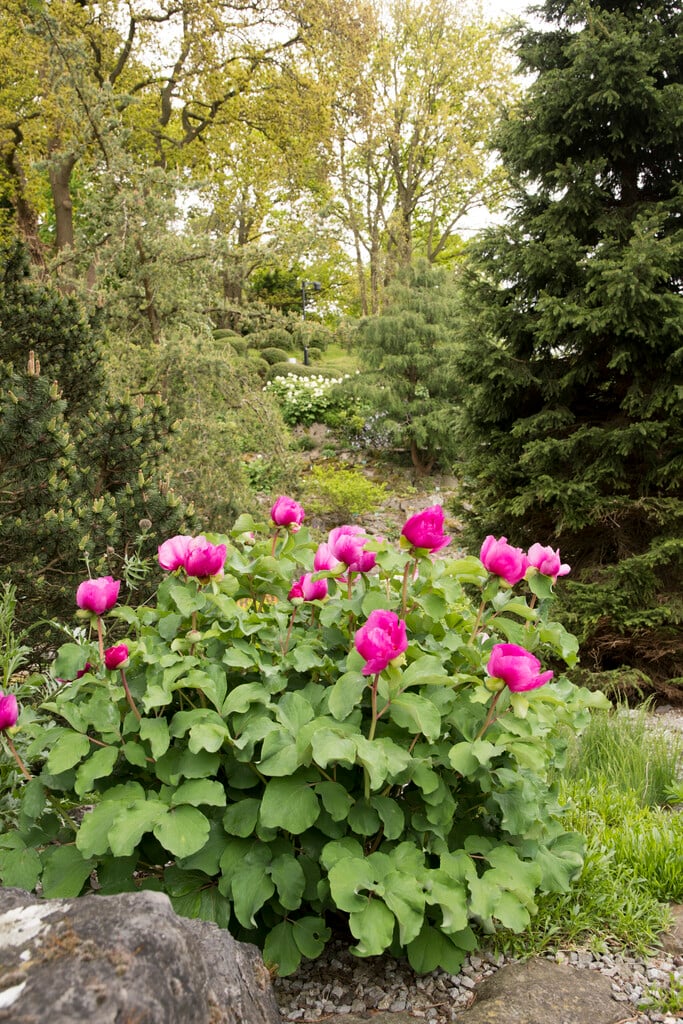Paeonia daurica
A clump-forming herbaceous perennial to around 75cm high, with leaves divided into nine broadly oval, mid green leaflets with rounded tips and often wavy edges. In late spring and early summer, cup-shaped single flowers are produced at the tips of the stems, with red, pink or occasionally white petals, and purple filaments in the centre

Buy this plant
Size
Ultimate height
0.5–1 metresTime to ultimate height
2–5 yearsUltimate spread
0.5–1 metresGrowing conditions
Moisture
Moist but well–drainedpH
Acid, Alkaline, NeutralColour & scent
| Stem | Flower | Foliage | Fruit | |
| Spring | Red Pink White | Green | ||
|---|---|---|---|---|
| Summer | Red Pink White | Green | ||
| Autumn | Green | |||
| Winter |
Position
- Full sun
- Partial shade
Aspect
East–facing or South–facing or West–facing
Exposure
Sheltered Hardiness
H6Botanical details
- Family
- Paeoniaceae
- Native to GB / Ireland
- No
- Foliage
- Deciduous
- Habit
- Clump forming, Bushy
- Potentially harmful
- Pets (dogs, cats): Skin irritant. For further information and contact numbers regarding pets, see the HTA guide to potentially harmful plants
- Genus
Paeonia may be herbaceous perennials or deciduous sub-shrubs with large, divided leaves and showy large bowl-shaped flowers, usually in early summer
- Name status
Correct
- Plant range
- SE Europe to Iran
How to grow
Cultivation
Grow in deep, rich, well-drained soil, ideally in full sun but will tolerate light shade. Will not tolerate waterlogging. Flowers may need support, see staking perennials. See herbaceous peony cultivation for more detailed advice
Propagation
Propagate by seed or by division, lifting and dividing established clumps in autumn
Suggested planting locations and garden types
- Cottage and informal garden
- Low Maintenance
- Flower borders and beds
Pruning
Cut back to ground level in autumn, to remove dead foliage and reduce the risk of disease
Pests
May be susceptible to leaf and bud eelworm and swift moth caterpillar
Diseases
May be susceptible to a virus, honey fungus, Verticillium wilt, peony leaf blotch and peony wilt
Get involved
The Royal Horticultural Society is the UK’s leading gardening charity. We aim to enrich everyone’s life through plants, and make the UK a greener and more beautiful place.